Gradient Ease
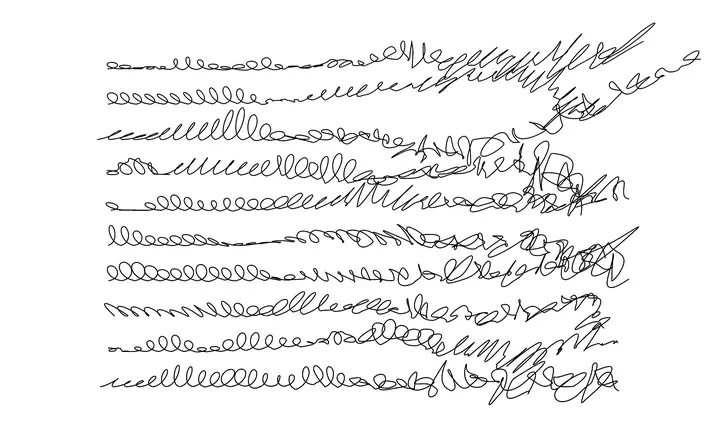
Near the end of 2019, I received a bit of funding from the Livable Futures Project to create a physical artwork that would merge generative drawing, 3D printing, and electronics. I had requested funding for physical materials, student assistance, and exhibition costs. The pandemic then made this impractical. I name am looking forward to the return of students, fabrication spaces, and art exhibits.
Meanwhile I’m working on drawing, virtual spaces, XR infrastructure, and writing about the project in the form of the essay below for a blog post, as well as a longer paper. Sharing work-in-progress as it shifts between start and finish is very much in line with this effort.
Gradient Ease
Shortly before the beginning of the pandemic, my project proposal to fund the creation of a physical wall hanging artwork was accepted. Over the year that followed, my attention shifted from exhibition spaces and fabrication collaborators, to unexpectedly working alone at home with primarily virtual interactions. This significant change required re-evaluating the forms this project might take.
For researchers, artists, and technologists, possibility spaces are vast. There are complex webs of connected challenges, resources, and potential impacts to be considered. I frequently introduce my students to readings about systems thinking, complexity, and the difficulties we have evaluating our options, given the limitations of our knowledge. In the face of this, we often gravitate towards reasoning with simplified binary abstractions: us/them, image/object, black/white. This is much easier than coping with fuzzy gray ideas.
Making helps me explore complex conceptual abstractions. For my work, I am particularly interested in exploring methods for representing and visualizing abstract spaces of technological capabilities. Descriptions of technologies are often binary, cataloging translations from inputs to outputs: “a computer senses light (or motion, or touch) and remaps it into sound (or shape, or action)".

For this project, I started by considering two related ideas. First, what does it mean for such binary systems to become messy, continuous transformations? E.g., how might the lines in a drawing gradually become physical objects? (Or text or light or data?) Second, what alternative paths exist through these transitional spaces?
I’ve started exploring these ideas by creating systems to generate transitions between properties and mediums. Beginning with generative drawing, the approach I’m pursuing models handwriting or doodling. It modulates between mathematical precision and messy scribbling. The binaries in each of the last few sentences are great examples of contrasting extremes that are drawing my attention and make me reconsider intermediate spaces and processes.
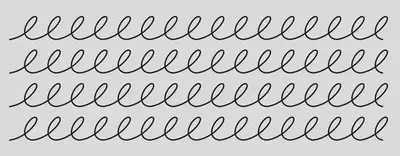
Creating lines in notebooks (actively retreating from screens) has been a source of both productivity and procrastination this past year while working from home. Noting mundane aspects of this practice (paper, pens, posture) greatly increased while sitting in the same room each day.
The drawing activity I landed on is an exploration of variation within a string of simple loops: a repetition of the cursive lowercase letter “e”. As a gestural motion it is equally satisfying to perform, or to watch being drawn by a machine.
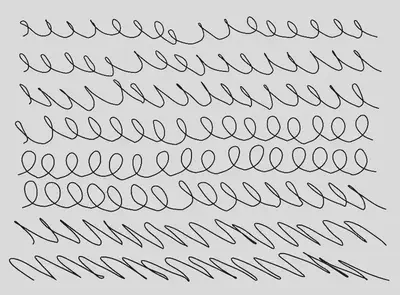
This writing movement suggests a signature, particularly when drawn quickly and without precision. Signatures vary widely but serve as “fingerprints” to identify us. The past year has seen exceptionally careful examination of both the genetic signatures of viral mutations as well as ballot signatures of mail-in ballots. Covid and voting have turned out to be much less simple and binary than many have hoped. I’ve long been interested in the concept of the “signature” of visual generative algorithms (Rowbottom 276).
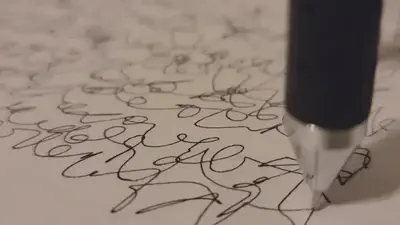
My next steps will be to gradually lift my 2D lines off the page into space via 3d printing, and then to infuse these lines with energy, with wires and other conductive materials, connecting input sensing to light output. Constructing such systems virtually adds yet another binary layer: prototypes are either virtual or physical. What could exist in the intermediate possibility spaces?
In late 2019, several of us had just begun using our office doorways as impromptu small exhibition spaces related to our current research (e.g., projection mapping, animated electronics, etc.) I had just started considering broader possibilities when we were all sent home. This “in-between” hallway and doorway space was one of the first I created to work within virtually. I have now begun hanging these plotter drawings virtually at different scales to see what it feels like to stand in front of them. As we begin to return to our physical office spaces in Fall 2021, I am able to blend the two spaces: augmenting the physical with the virtual, experiencing a mix of both simultaneously.
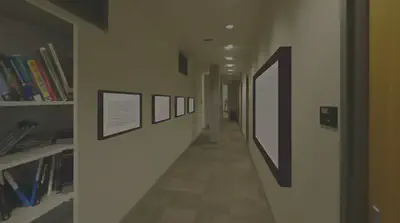
Consideration of these mixed abstract, virtual, and physical spaces has had significant impact on my noticing binary tendencies in nuanced circumstances such as political discourse and technology ethics. As when blending paint colors, I hope to smear together several of my existing discrete practices. In addition to the above-mentioned value of metaphorical thinking-by-making, I am discovering new technical capabilities that will be useful for both my teaching and research collaborations.
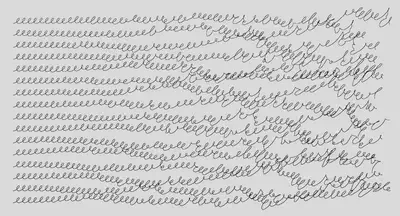
References:
Kelly, Kevin. “What Technology Wants”, 2009, https://kk.org/thetechnium/what-technology/
Rowbottom, Andrew. “Evolutionary Art and Form.” Evolutionary Design by Computers, edited by Peter J. Bentley, Morgan Kaufmann, 1999, pp. 261–77.
Co-produced by Livable Futures, a project of the Global Arts and Humanities Discovery Theme and the Advanced Computing Center for the Arts and Design.